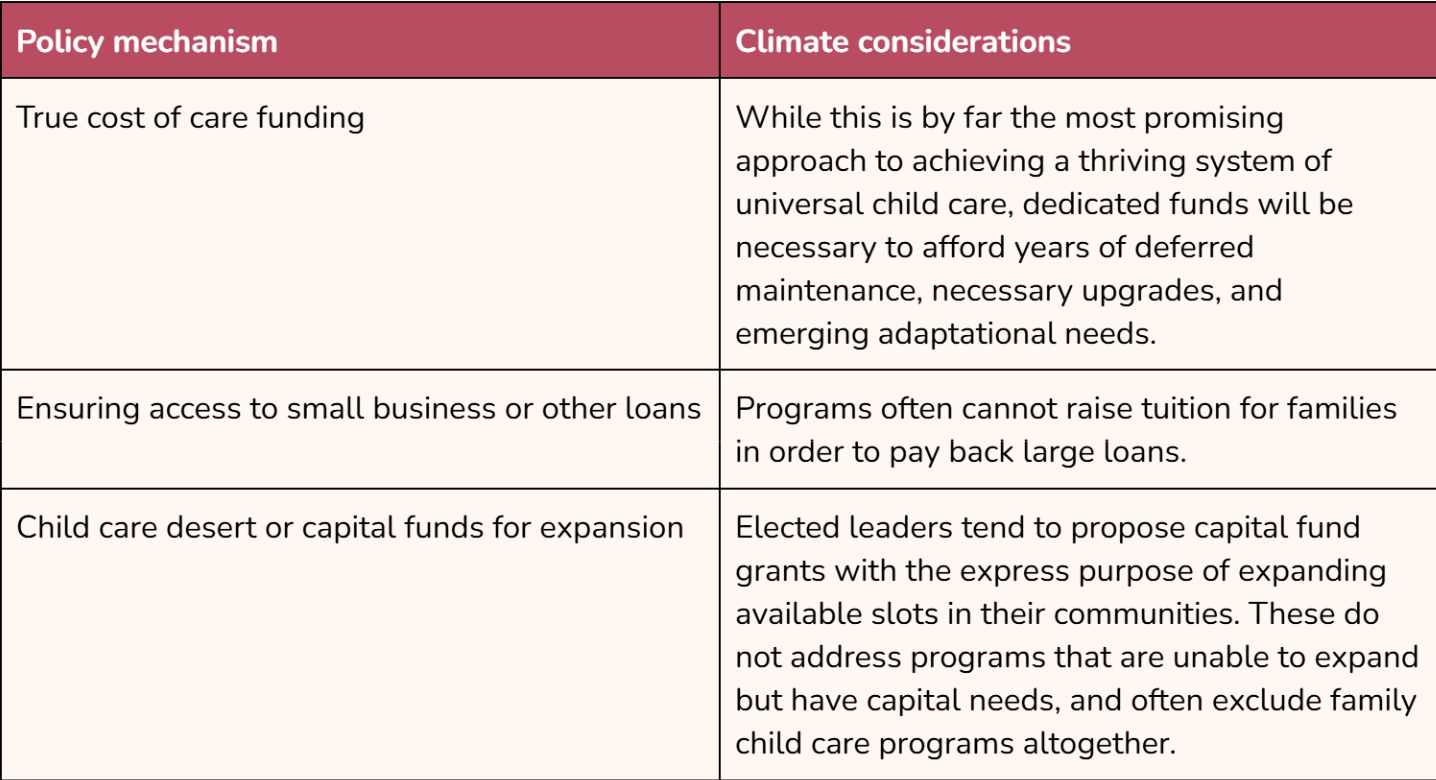Climate Resilient Child Care Programs
This Earth Day, I found myself wondering: what would it mean for policy to meaningfully support climate resilient child care programs?
Why do both targeted and systems-based approaches to child care policy fail to prioritize the health and developmental needs of our youngest children in the face of climate change and environmental racism?
There have been important, comprehensive policy recommendations in this area over the past several years, notably Aspen Institute and Capita’s outstanding, beautiful, and thorough Early Years Climate Plan.
Rather than recreate the wheel, I wanted to use this blog to point out specific needs, hear what is missing, and demonstrate where the most popular child care funding proposals have not comprehensively incorporated climate and environmental considerations.
After the struggle of earning poverty wages, the most consistent feedback I’ve heard from child care educators in almost a decade of advocacy work is that there simply is no way to afford to make programs environmentally healthier places for children to learn and grow. In both COVID-19 surveys I conducted when I worked for the New York Association for the Education of Young Children, in addition to the loud outcry on wages and the need for healthcare, sick pay, and retirement, I heard consistent sorrow and stress that program owners and directors knew they could do better for children if only they could afford it.
These problems were felt intensely in urban and rural communities. They were especially acute in family child care programs – where ambiguity in determining what is a home improvement and what is a program improvement all too often gets in the way of funding to do the right thing – and nonprofit centers – which are unable to charge parents more to cover loans for such improvements while local philanthropy primarily fills urgent funding gaps.
The most common examples shared with me, setting aside disaster preparedness and recovery, included:
Temperature control and HVAC:
Heat pumps or air conditioning, especially in rooms where infants sleep
Clean HVAC with regularly changed HEPA filters or other air filtration
Shaded outdoor play areas
Indoor large motor play areas for when it is unsafe to play outside due to extreme heat or smoke in the air
Efficiency improvements that reduce program costs, including insulation and new windows
Replacing gas appliances
Carpet removal
Removing concrete from play spaces
Purchasing high quality toys made of natural materials
In turn, the most common child care funding mechanisms fail to include climate and environmental investments, even when the initial expenses will bring down long-term costs.
Creating a child care system that works for all families, supports the needs of each child, and honors the work of the educators they rely on must begin with addressing the harms of decades of chronic underinvestment and austerity. In order for cost of care models and expansions to live up to their promise, policymakers must also fund broadly defined, evidence-based, equitably available climate and environmental resources for home-based programs, nonprofit, and small for-profit operator child care centers.
What other climate and environmental needs are the programs in your community facing? What promising solutions have your elected leaders proposed to address them?


